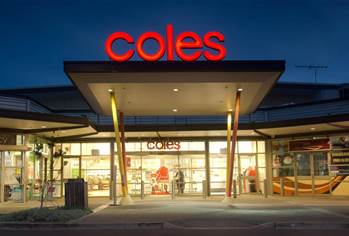
"Although Icann is firmly committed to implementing its new TLD programme in 2009, there are many unanswered questions related to whether sufficient evidence of demand for new TLDs exists, and if so whether now is the time to be launching such a costly and expansive initiative," Irfan Salim, president and chief executive at MarkMonitor, said in the letter.
Salim questioned the timing of the new project, highlighting the harsh economic climate as a good reason to postpone the rollout and conduct further studies into the demand for new TLDs.
"Depending on the results of such studies, it may be appropriate to scale back the launch of the new TLD programme initially, such as launching only those internationalised domain names or geographic TLDs that are supported by significant community demand," he wrote.
The letter also claimed a lack of demand from MarkMonitor's corporate clients. "Since it appears that the new TLD programme launch is inevitable, we understand that some corporations will likely apply for new TLDs for primarily defensive reasons, and a few may do so to support internet marketing initiatives," said Salim.
"However, most major corporations prefer that the new TLD launch be delayed until basic safeguards are adopted to protect against brand abuse."
Assuming that the project goes ahead, MarkMonitor has asked Icann to adopt better safeguards against systemic brand abuse in the creation of hundreds if not thousands of new TLDs.
"As reported by MarkMonitor in its Summer 2008 Brandjacking Index, 30 of the most popular brands experienced a weekly average of over 400,000 instances of cyber squatting targeting their brand," wrote Salim. "We believe that this number will increase exponentially when hundreds or thousands of new TLDs are available."
The letter goes on to make several other requests to help ensure that companies can effectively combat those who wish to exploit brands for their own gain. These include changes in dispute resolution costs, and better requirements related to domain registrant details through the 'Whois' command.
"The undersigned companies are deeply concerned about their ability to protect millions of internet users worldwide from additional forms of online abuse, such as fraud, phishing, counterfeits, identity theft and other forms of brand abuse," said Salim.
"We urge Icann to carefully consider these additional safeguards against illegal online activities in the new TLDs."
MarkMonitor recently hosted a roundtable debate to discuss the pros and cons of the proposed generic TLDs. It was generally agreed that, although the move could be beneficial to help real-world communities establish an online identity through the creation of a relevant TLD, the implementation could fracture the internet into discrete sections, which could be difficult to cross.
"With the approval of certain community TLDs, such as .cat for Catalonia, the floodgates have already been opened," said Bart Lieben, a partner at intellectual property law firm Laga. "The problem now is that there [are] no objective criteria for keeping the floodgates closed."
The issue of non-US ASCII characters was also raised. Domains can currently be registered using Chinese and Japanese characters, but TLDs are always rendered in US ASCII characters.
This would change for the new generic TLDs, which could be very useful to people whose first language and alphabet is not based on US ASCII characters. But this could cause a range of problems for search engines, and possibly split the internet into disparate sections.
The impact this might have on internet shopping and banking was also raised at the roundtable event. The introduction of thousands of new TLDs could help local businesses better present themselves online, but also opens up more opportunities for less legal and more dangerous online operations.
Similarly, banks could opt to buy up relevant domain names in each of the new TLDs, or could specify and control either their own company TLDs, such as .hsbc or .rbs, or even create a more generic .bank domain, which would strictly limit the number of domains to financial institutions, ensuring that the best security measures are in place and the risk of cyber squatting is eradicated.
The debate concluded that the process could have far reaching effects, both positive and negative. Icann needs to do all in its power to make sure that the overall impact is positive, according to MarkMonitor, and that the internet remains open and globally connected.







.png&w=100&c=1&s=0)

 iTnews Benchmark Security Awards 2025
iTnews Benchmark Security Awards 2025
 Digital Leadership Day Federal
Digital Leadership Day Federal
 Government Cyber Security Showcase Federal
Government Cyber Security Showcase Federal
 Government Innovation Showcase Federal
Government Innovation Showcase Federal
 Digital NSW 2025 Showcase
Digital NSW 2025 Showcase












_(1).jpg&h=140&w=231&c=1&s=0)



